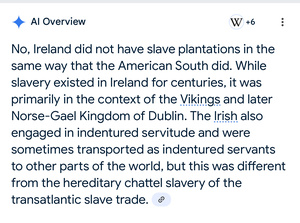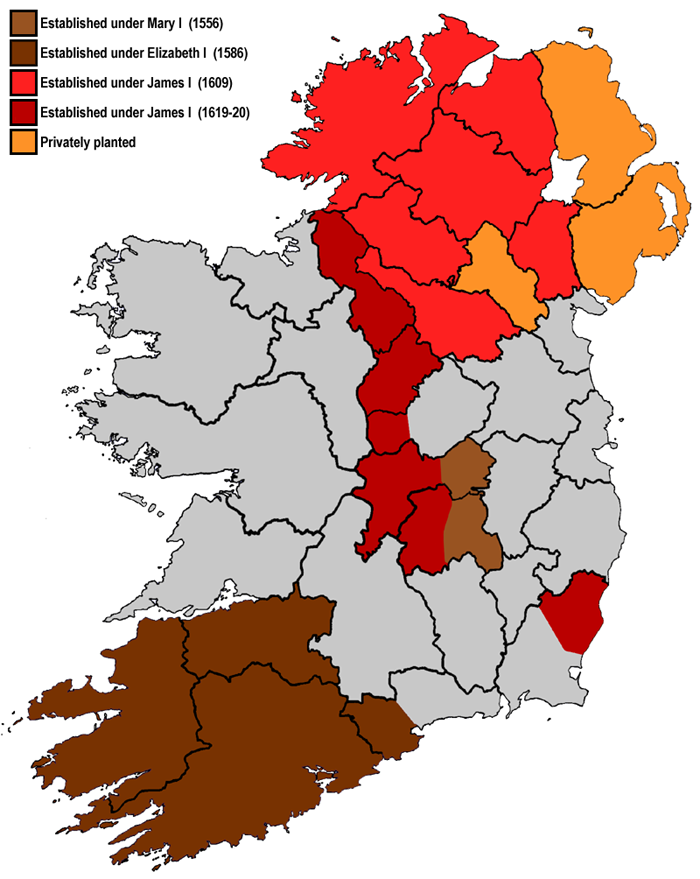The British, French, and Portuguese (Sephardic Jews) were most of the large plantation owners in North America and the Caribbean by a large percentage.
The small Kentucky/Tennessee plantations owned by white Scots-Irish were not giant plantations capable of spreading their masters surname throughout the nation once the slaves were freed.
Try again.
The ancestry of slaveholders in the South was largely people of British ancestry in Virginia, the Carolinas, and Deep South (with Louisiana being an exception) and a mix of English and Scotch-Irish in the northern south (Tennessee, Kentucky) and a mix of all three plus more in Texas. In Louisiana, particularly around New Orleans, it is a bit more complicated, with people of French descent and other ethnic groups owning slaves. I’m not an expert on Louisiana ethnicities, so I’ll leave additional detail to someone with knowledge in that area.
In Texas, folks moved in who were of Scotch-Irish, English, and other ancestries from the US and it’s Territories, owner slaved, and settled there. Some Spanish and Mexicans in the state also owned slaves. It’s important to note slavery’s legality was fluid in Mexico and Mexican Texas in the years before it became a Republic and later a state. (see: Alice Baumgartner, “South to Freedom: Runaway Slaves to Mexico and the Road to Civil War,” Basic Books, 2020.)
Also, in Texas, closer to, and during the American Civil War, you had slaveholders from the Deep South migrating to Texas as war raged close to their homes. Texas was relatively free of armed conflict for much of the war. By 1860, slave owners who originated from a diverse group of states resided in Texas. (See: Ralph A. Wooster, “Notes on Texas Largest Slaveholders, 1860,” Southwestern Historical Quarterly, Vol. 67 No. 1, 1967.”)
In Texas you also had unique slaveholders such as Swante Mangus Swenson who was the first Swedish immigrant to Texas. He later freed his slaves and gave them land. (see: Handbook of Texas; typescript manuscript relating to SM Swenson]. Though there weren’t many, there were some German slaveholders in Texas as well. (See: James Kearney, “Nassau Plantation: The Evolution of a Texas German Slave Plantation, Univ. of North Texas Press, 2011)
Historian unveils Irish heritage of hundreds of slave owners
A historian who discovered that at least 260 slave owners in South Carolina in the 1800s were Irish-born has said the number is “just the tip of the iceberg”.
Martine Brennan, from Kerry, began researching Ireland’s involvement in the slave trade after a DNA test revealed she had distant African American cousins in South Carolina.
“As I researched more I came across other Irish people who also discovered distant relatives that were African American,” Brennan told The Times yesterday. “It became very evident to me that while some of these relationships may have been consensual where races mixed, many were not as they aged back to the 1800s when a clear power dynamic was at play.”
The African American Irish Diaspora Network, a US-based organisation, estimates that about 38 per cent of African Americans have some Irish ancestry.
In 2020 Brennan began her Enslavement to Citizenship project, which focuses on South Carolina, where 40 per cent of enslaved people brought to America entered the country. The work has so far found 260 Irish-born slave-owners and has involved extensive record searching through images of headstones, archived letters, newspaper obituaries, records of property, auction listings and wills.
A historian who discovered that at least 260 slave owners in South Carolina in the 1800s were Irish-born has said the number is “just the tip of the iceberg”.Ma

www.thetimes.com
Better get chat GPT to help you.




